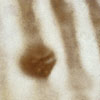 Text search Text search
 Related images Related images
 HistoryWorld HistoryWorld
 Link Link
 Map Map
Click the icons to visit linked content. Hover to see the search terms. |
|  |
| | | | | | | |
|
| c. 1864 |
| | | Scottish physicist James Clerk Maxwell presents to the Royal Society his discoveries in the field of electromagnetics, now known collectively as Maxwell's Equations | |   
| |
|
| 1878 |
| | | William Crookes develops a special tube, now known as the Crookes tube, for the study of cathode rays | |   
| |
|
| 1894 |
| | | Scottish physicist William Ramsay isolates argon, following Rayleigh's discovery that an undiscovered gas combines with nitrogen in the air | |    
| |
|
| 1895 |
| | | German physicist Wilhelm Roentgen discovers rays that can penetrate light-proof barriers, and names them x-rays because their nature is as yet unknown | |   
|  | Roentgen's X-ray of his wife's hand
Wellcome Library, London
|
|
|
| 1896 |
| | | French physicist Antoine Henri Becquerel discovers in uranium salt the phenomenon of natural radioactivity | |   
| |
|
| 1897 |
| | | English physicist Joseph John Thomson, working at the Cavendish laboratory in Cambridge, discovers the existence of the electron | |    
| |
|
| 1900 |
| | | German physicist Max Planck proposes the revolutionary concept of the quantum theory | |    
| |
|
| 1902 |
| | | A.E. Kennelly and Oliver Heaviside independently see the link between the atmosphere and the behaviour of radio waves | |   
| |
|
| 1903 |
| | | Ernest Rutherford and Frederick Soddy identify the phenomenon of radioactive half-life | |    
| |
|
| 1905 |
| | | Albert Einstein explains the photoelectric effect as a flow of discreet particles (quanta) of electromagnetic radiation | |   
| |
|
| | | | | |
| |